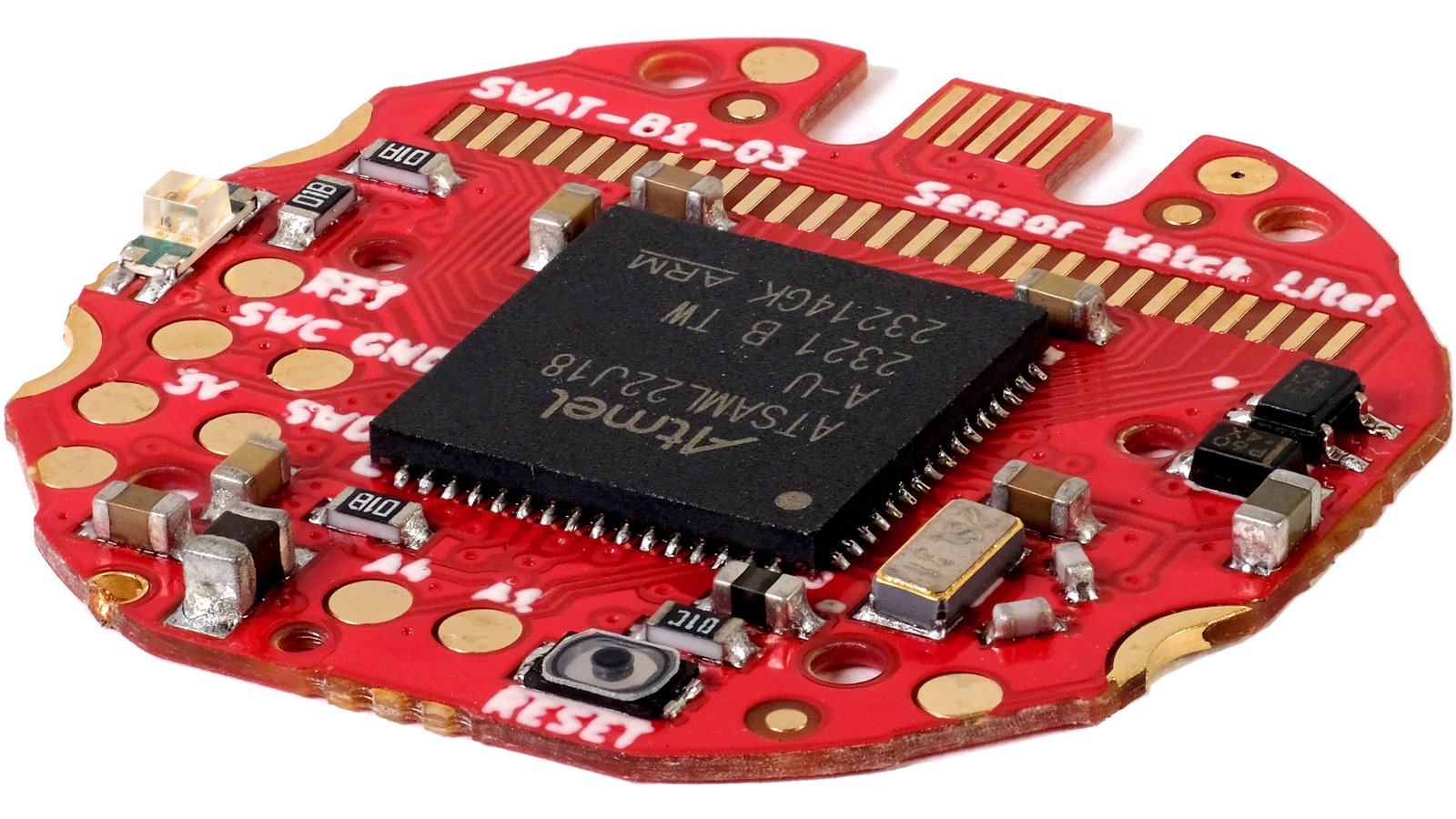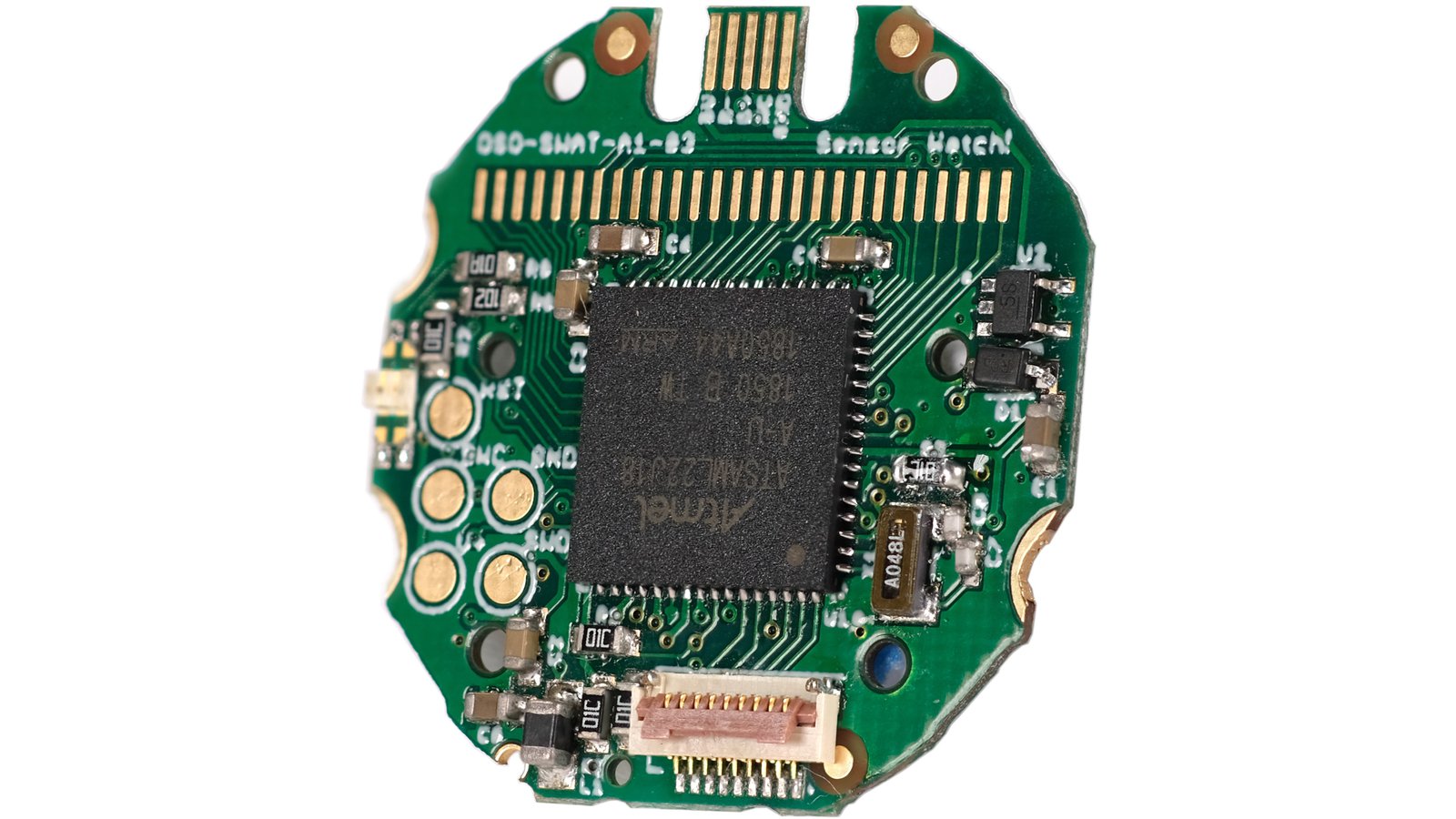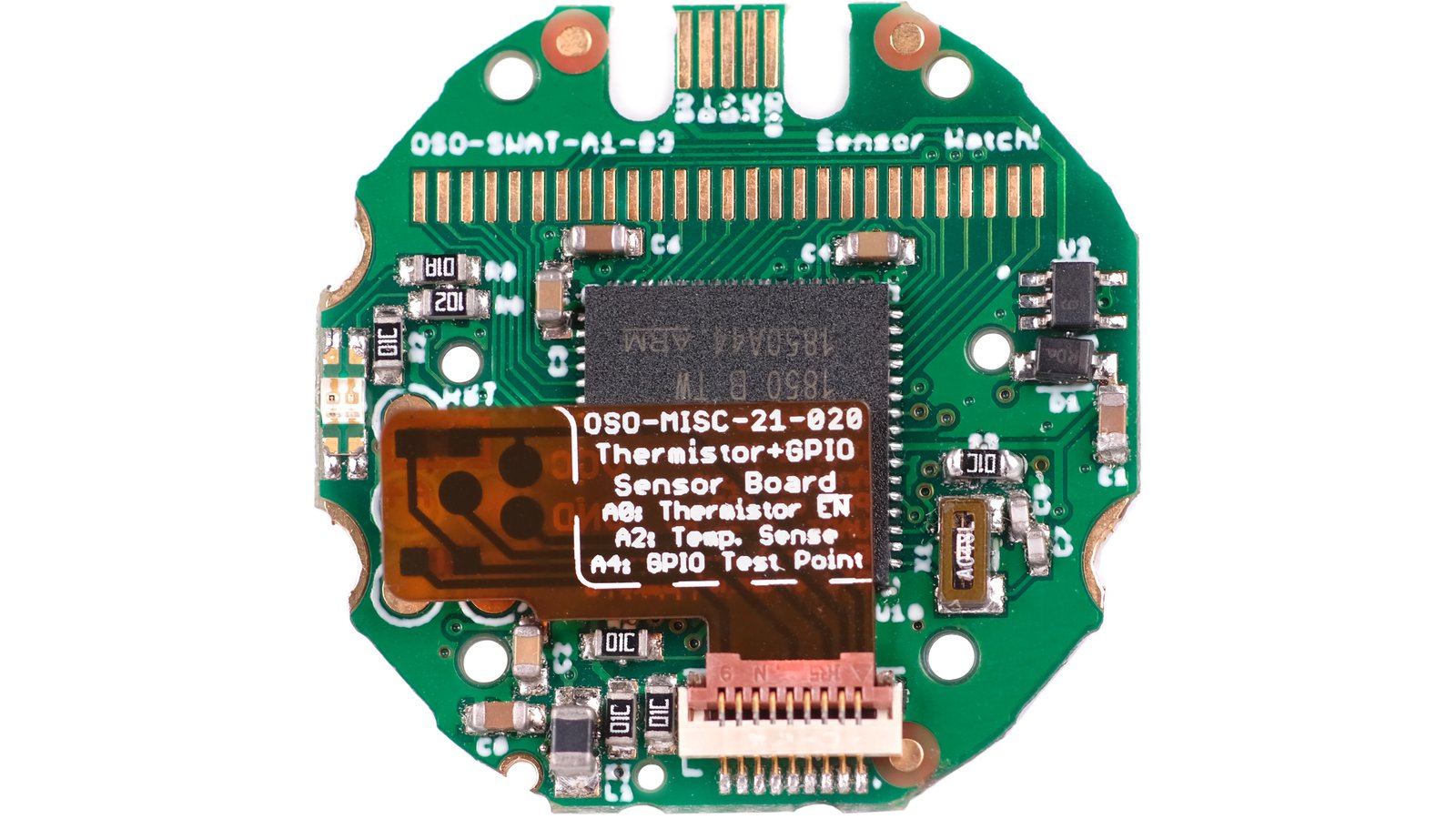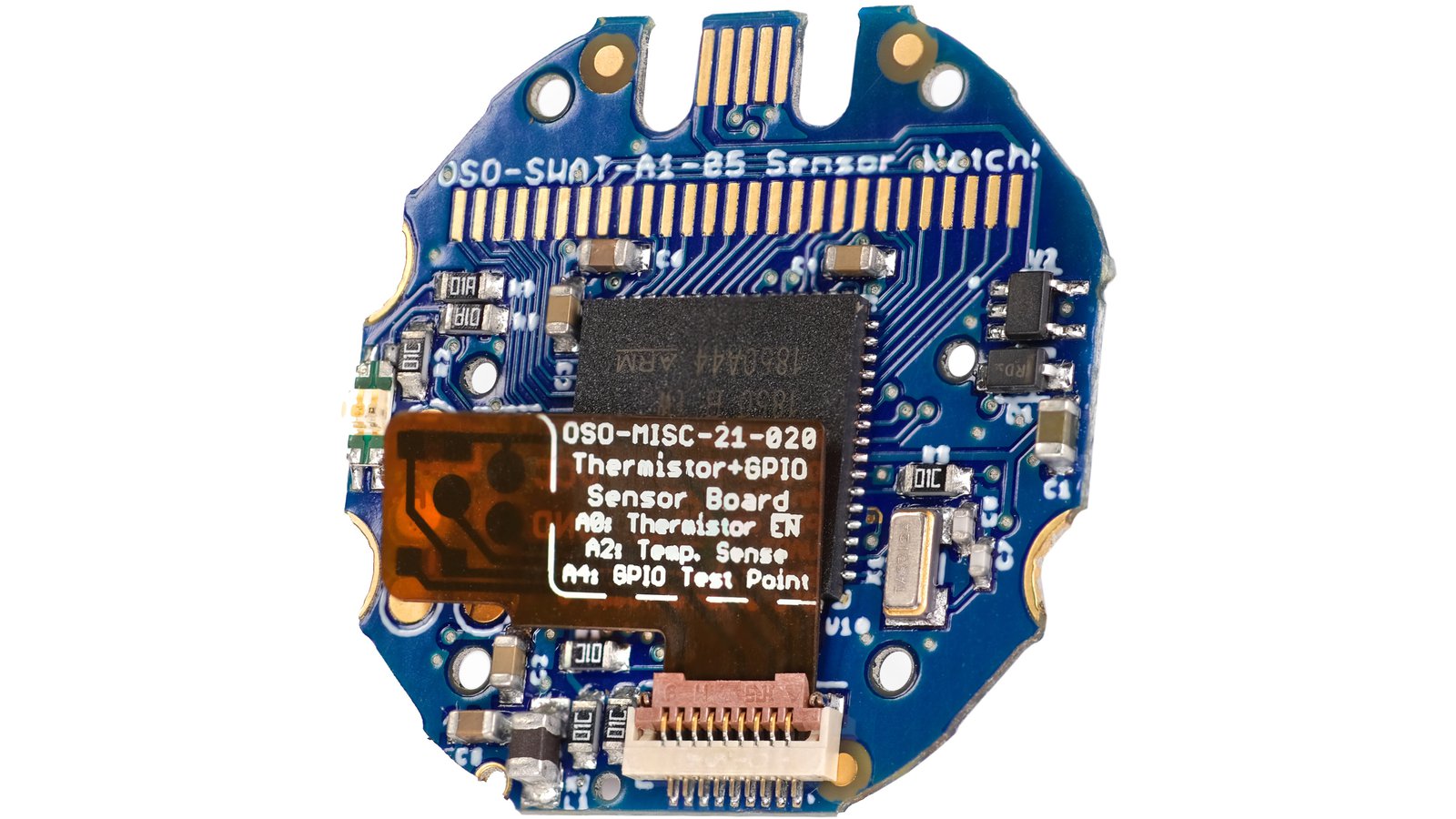Oddly Specific Objects
Mobile Devices
ARM
Sensor Watch
A hackable ARM Cortex M0+ upgrade for a classic Casio wristwatch
Funding ended on Feb 21, 2022 at 03:59 PM PST.
Oddly Specific Objects
Mobile Devices
ARM
Funding ended on Feb 21, 2022 at 03:59 PM PST.
Sensor Watch is a bridge between eras. It takes an iconic 30-year-old design from a golden age of digital watches, and pairs it with a modern, powerful microcontroller and state-of-the-art sensing capabilities. This small circuit board, less than an inch in diameter, replaces the original quartz movement in a Casio F-91W watch to put the capabilities of an ultra-low-power ARM Cortex M0+ microcontroller on your wrist.
Sensor Watch is not like most smart watches. It makes a different set of engineering tradeoffs, to achieve a different set of goals:
Sensor Watch is designed to be useful right off the bat. The community Sensor Watch firmware, called Movement, has several useful watch faces already:
There are others (stopwatch, pulsometer, battery voltage), but the important thing isn’t the apps that come with Sensor Watch. The important thing is that Sensor Watch is open source and easily hackable, which means you can write the apps that make sense for YOU. Do you want an astronomy face that can show you moon phase and predict satellite passes? A transit face programmed with train arrivals for your nearest subway station? An astrology face that can tell you if Mercury is in retrograde? These are all apps that you could write for Sensor Watch.
In addition, the sensor board in Sensor Watch is modular and swappable, so if you want a different kind of sensor than the one that’s on the watch? You can build a sensor board of your own, and sense the things that matter to you.
The Casio F-91W is iconic for any number of reasons: it’s affordable and durable, and it’s come in many colors over the years, which means you’ll almost certainly find one that matches your style. It’s also small! At just 34 mm in diameter, it’s smaller than any smart watch, and can feel at home on any wrist. This small size, though, leads to a challenge when repurposing the watch to turn it into a Sensor Watch: how can we fit useful sensor technology into such a small package?
The answer lies in the nine-pin flex PCB connector at the bottom of the Sensor Watch board. By plugging a miniature sensor board in to the Sensor Watch main board, you can add whichever sensors make the most sense for your use case. This makes Sensor Watch far more versatile than a fitness tracker that can only track motion, or a compass watch that can only sense direction.
While Sensor Watch comes with a temperature sensor board, you could instead replace it with a phototransistor board for light metering, a microphone for tracking noise exposure, or, yes, an accelerometer for activity tracking. Sensor Watch leaves a 5.7 × 5.7 × 1 mm area free for whatever sensors you want to add. It’s a small volume, but modern MEMS technology allows smaller sensors to do more than ever before.
In the spirit of open source hardware, several of these sensor boards are already posted in the Sensor Watch repository, and the hope is that as we build more of a community around Sensor Watch, folks will design additional sensor boards to give their Sensor Watch even more interesting capabilities.
The SAM L22 microcontroller at the heart of Sensor Watch is an ARM Cortex M0+ chip with 256 KB of Flash and 32 KB of RAM, running at up to 32 MHz. It’s similar in many ways to the SAM D21 you’d find in a Feather M0 or Arduino Zero, with many of the same versatile peripherals:
¹ Red/Green backlight is Red/Blue on limited-edition boards.
² The piezo buzzer is the only piece that requires soldering. You will need to remove a metal piece from your donor F-91W and solder it to the Sensor Watch board. If you don’t feel comfortable doing this, all other features of Sensor Watch will function identically; the watch just won’t beep.
In addition to these familiar peripherals, the SAM L22 packs one less familiar one: a segment LCD controller. This controller speaks the native language of the F-91W’s display glass, and it’s the key to the unique low power capabilities of Sensor Watch:
This is not to say there aren’t tradeoffs: the segment LCD in the F-91W was only designed to display the time, so not every number or letter works in every position. It also cannot display arbitrary images like an e-paper display or LCD matrix. Still, with a bit of creativity, you can create a watch face that displays quite a lot of information, and carry it with you all year long.
The 9-pin sensor board connector offers a lot of additional functionality that you can make use of on a sensor board:
| Sensor Watch | Watchy | PineTime | BangleJS | |
|---|---|---|---|---|
| Manufacturer | Oddly Specific Objects | SQFMI | Pine64 | Espruino |
| Sensors | Thermistor + 12-bit ADC and exposed I²C pins, options for more on 9-pin connector | Accelerometer | Accelerometer + Heart Rate | Accelerometer + Magnetometer + Heart Rate + GPS |
| Programming Interface | Built-in USB | Built-in USB | External pogo pins | Bluetooth |
| Watch Size (in case) | 34.5 mm × 37.5 mm | 44 × 49 mm | 37.5 × 40 mm | 50 × 50 mm |
| Thickness (in case) | 8.5 mm | 15 mm | 11 mm | 17 mm |
| Battery Life | 1 Year (estimated) | 2-7 days | 1 Week | 1 Week |
| Design Files Available | Yes | Yes | Schematic Only | No |
| Display | Low-power 72-segment LCD | 1.54” 200x200 E-Ink | 1.3" 240×240 LCD | 1.3" 240x240 LCD |
| Buttons | 3 | 4 | 1 | 3 |
| Water Resistance | 30 meters | No | 1 meter | 10 meters |
| Connectivity | Minimal | WiFi + Bluetooth | Bluetooth | Bluetooth |
| Price | ~$54 ³ | $59 | $27 | $95 |
³ $35 + the cost of an F-91W
And please feel free to reach out using using the Ask a technical question link below!
We have already produced the first run of about 85 limited-edition boards, thereby proving out the viability of our manufacturing process. When the campaign ends, we will place orders for all of the components required to manufacture the standard-edition Sensor Watch boards. (We have quotes from several different contract manufacturers here in the States.) The limited-edition boards should ship out a month or two after the campaign ends, with the standard-edition boards following along several months later.
We will assemble the temperature-sensor boards in house; these small flex PCB’s have only two components each, making them easy to hand-assemble and test here in our workshop.
As soon as all the boards are assembled and tested, we will ship them to Mouser Electronics, Crowd Supply’s fulfillment partner, who will distribute them to backers. You can learn more about Crowd Supply’s fulfillment service under Ordering, Paying, and Shipping in their guide.
The ATSAML22J18A-MUT remains in short supply due to the global semiconductor shortage. This is without question the biggest risk to the project: this chip is at the heart of Sensor Watch, and we can’t make the boards without it. As of this writing, these chips are expected to be available next summer, but that availability could slip as other customers preorder this inventory between now and the end of the campaign. We plan to handle this risk by working with Crowd Supply, Mouser and Microchip to ensure that we place the best possible order for these chips as quickly as possible after the campaign ends.
"Casio's famed F-91W watch, beloved of terrorists, is the frequent subject of ingenious modifications, including a full smartwatch conversion. Now you can purchase a kit board you can swap in yourself to give the zillion-selling timepiece superpowers."
Produced by Oddly Specific Objects in Brooklyn, NY, USA.
Sold and shipped by Crowd Supply.

A Cortex M0+ board swap for the Casio F-91W wristwatch with a built-in temperature sensor
Want to buy this item? Check the current project page for the latest information.

One circuit board to swap into a Casio F-91W or A158W wristwatch.
Want to buy this item? Check the current project page for the latest information.

A sensor board—for the original Sensor Watch—with a thermistor temperature sensor and six test points that break out the I²C bus, two GPIO pins, 3 V power, and ground.
Want to buy this item? Check the current project page for the latest information.

One green circuit board, to swap into a Casio F-91W wristwatch, plus a temperature sensor board.
Want to buy this item? Check the current project page for the latest information.

One blue circuit board, to swap into a Casio F-91W wristwatch, plus a temperature sensor board. This limited-edition model ships earlier and has a red/blue LED instead of a red/green LED. (Sorry, this model is not available for shipping to Europe.)
Want to buy this item? Check the current project page for the latest information.

We create comprehensible open source designs that democratize the knowledge required to create useful technology. Read: we make stuff, then we tell you how we did it so that you can do it too.